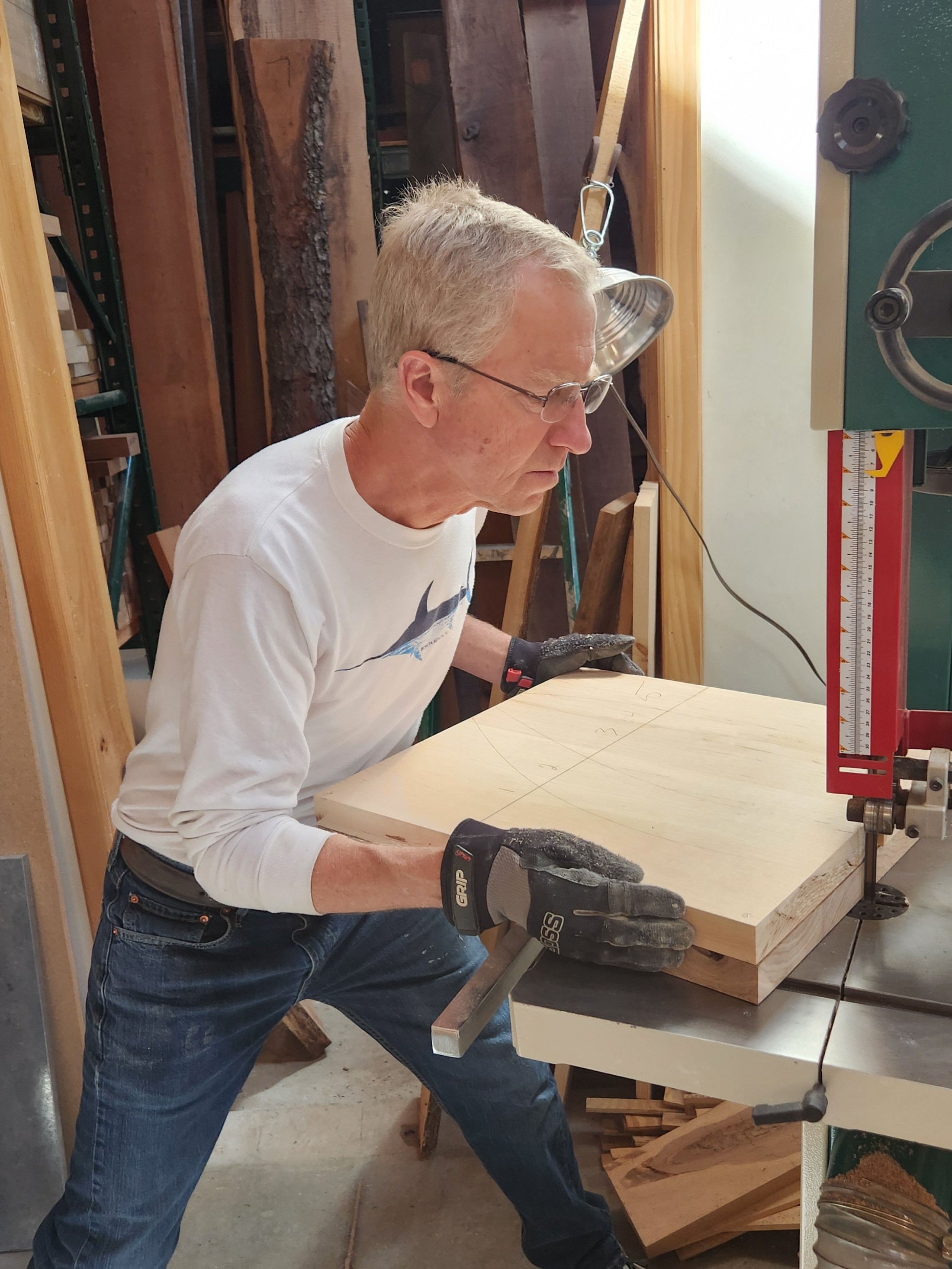Do You Want to See the Process of Creating My Phase Wall Sculptures?
The Inspiration for Phases
Many of you read the blog about how my granddaughter’s love of the moon inspired my Phase series. If not, you can learn more about my inspiration here. Her delight in spotting the moon in the daytime sky planted a seed in me—one that’s grown into a unique body of work.
How I Select the Wood for My Sculptures
Each sculpture begins with a palette of beautiful hardwoods. Most grew within a few miles of my studio and were harvested when they had reached the end of their healthy lifespan. A few even came down in storms, including a tornado and a hurricane. Each has a story behind it, and I can tell you where nearly every piece of wood in my studio came from.
I work primarily with cherry, walnut, and maple, and often include others like ash, oak, or elm. The individual pieces are carefully selected to complement one another in color, grain, and tone.
From Raw Slabs to Precise Pieces: Milling the Lumber
The process begins with milling rough slabs of hardwood. Each piece is flattened on one face and then planed to a uniform thickness.
After milling, the boards are ripped and crosscut to size.
Each piece is matched for both aesthetics and stability. The care and precision that begins at this step are essential for creating the tight joinery that defines my sculpture. The boards are glued up into a blank slightly larger than the final sculpture. The following day, the blank is flattened into a nearly perfect plane.
This process is repeated for each species of wood being used.
Cutting Curves on the Bandsaw
Two blanks of different woods are temporarily fastened together. I envision the final design and lay out the curves to be cut. If things go south, this is likely when it will happen. Every cut has zero margin of error if the joints are to be perfect. The precision at this stage comes from decades of practice and thousands of cuts made. “A-Game” every time, or all that work becomes scrap. Honestly, it’s a thrill every time it comes out right!
Glue-Ups: Bringing the Curves Together
Carving with the Grinder: Bringing the Sculpture to Life
Once the panel is fully assembled and the glue has cured, I carve the sculpture using an angle grinder fitted with a carving disc. This is where the piece really begins to come alive. I have a master plan, but work intuitively, following the contours of the wood and refining the curves with sweeping motions. This is a Zen-focused time. An errant grind can ruin a piece, and a moment of inattention with the exposed, spinning cutting wheel could sideline me for a while. As the layers of wood are carved away, the sculpture gains depth and movement—subtle transitions between the different hardwoods emerge, hopefully highlighting the flow and rhythm I envisioned from the beginning.
Bringing Out the Beauty: Sanding the Sculpture
After carving, I begin the somewhat obsessive process of sanding. This stage is all about patience and precision. Starting with a coarse grit, I gradually work my way to finer grits, carefully smoothing every curve and surface. Sanding reveals the grains and textures hidden beneath the rough surface and brings out the piece's soft, sculptural feel. The sculpture starts to glow with a natural warmth as the surface becomes silky to the touch.
Applying the Finish: The Final Reveal
Applying the finish is one of the most rewarding steps in creating a Phase sculpture. I typically use a hand-rubbed finish that penetrates into the wood, enhancing its natural color and bringing out the richness of the grain. As it soaks in, the contrast between the walnut, maple, and cherry becomes more vivid, and the curves take on a new sense of depth. I build up the finish in layers, buffing between coats to achieve a soft sheen that feels as good as it looks. This is when the sculpture truly comes to life!
See the Phase Sculptures in Person
If you’d like to experience the whole series up close, I’ll be exhibiting them at the Paradise City Arts Festival in Northampton, MA, from Saturday, May 24th to Monday, May 26th. It’s the perfect setting to see the craftsmanship and feel each piece's energy.
Beautiful art for life well lived,
Moe





























